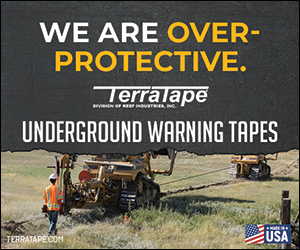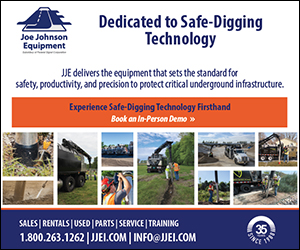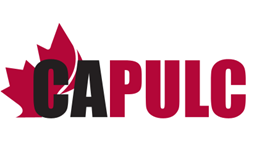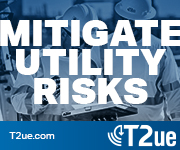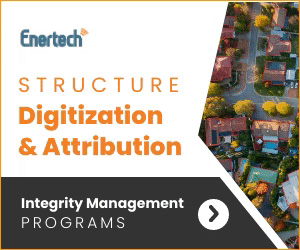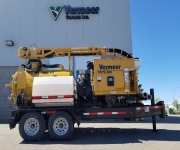 |
||||||||||||||||||
| Archive | Subscribe | Send to a Friend | DigSafeCanada.ca | Dig Safe | ||||||||||||||||||
Upcoming Events
The Canadian Common Ground Alliance is excited to announce that registration for the 2023 Damage Prevention Symposium is now open. Join us for this dynamic and engaging event that is sure to provide practical, relevant information which will focus on damage prevention public awareness initiatives and expand stakeholder knowledge on efforts to protect essential infrastructure. The format for the conference consists of 3 days of professional development, workshops, panel presentations, networking events, along with an exhibitor tradeshow. All sessions will be in English. We are excited to announce 3 of our panel topics. Locator Resources Challenge Pipeline Rights of Way Interested in participating in one of our panels?
Monoxide Poisoning: Commercial explosives, rock blasting and construction work in inhabited areas Damage Prevention 2.0: Automating visual inspection of pipeline and utilities right-of-way, from encroachment detection to geohazards The Duty to Inform: Quebec Civil Law Perspectives Use of GIS Technologies to Improve Knowledge and the Accuracy of Gas Assets
---------------------------------------------------------------------------------------------------------------------------------------------- Le Canadian Common Ground Alliance est fier de vous annoncer que les inscriptions au Symposium sur la prévention des dommages 2023 sont maintenant ouvertes. Joignez-vous à nous pour cet événement dynamique et engageant qui fournira des informations pratiques et pertinentes sur les initiatives de prévention des dommages et élargiront les connaissances des différentes parties prenantes sur les efforts de protection des infrastructures essentielles. Le format du symposium se compose de 3 jours de développement professionnel, d'ateliers, de présentations en panel, d'événements de réseautage, ainsi que d'un salon des exposants. Prenez note que toutes les conférences seront en anglais. On vous annonce officiellement 3 de nos sujets de panels Locator Resources Challenge Pipeline Rights of Way Êtes-vous intéressé à participer à l'un de nos panels ? De plus, notre symposium offrira une multitude de sessions informatives et éducatives, englobant un large éventail de sujets intéressants conçus pour approfondir votre compréhension et élargir votre expertise. Prenez note que toutes les sessions seront en anglais. Carbon Monoxide Poisoning: Commercial explosives, rock blasting and construction work in inhabited areas Damage Prevention 2.0: Automating visual inspection of pipeline and utilities right-of-way, from encroachment detection to geohazards The Duty to Inform: Quebec Civil Law Perspectives Use of GIS Technologies to Improve Knowledge and the Accuracy of Gas Assets
National News
Source: Link2Build Ontario Canada has no hope of reaching its 2050 climate goals unless it can find a way to speed up the approvals process for major projects in this country, a new report states. The report, from the Business Council of Alberta, says Canada's current regulatory system for large-scale infrastructure projects is "complex, fractured and frustrating." It warns that massive investments in everything from mines for critical minerals to renewable power generation to hydrogen technology will be required in the coming years if Canada is to achieve its greenhouse gas emissions reduction targets. But the report's authors say that Canada already has a reputation as a place where major projects can't get built — and unless that changes, the country's environmental ambitions will be out of reach. Source: On Site Cameras and imaging systems are changing construction sites. From site mapping to project tracking, cameras, drones and lasers are providing very accurate and precise information that can be harnessed to produce more efficient builds. On March 20, three industry experts, Steve Mahaney, VDC area manager for Eastern Canada at EllisDon; Cody Nowell, construction services manager at PCL Constructors; and Steve Rollo, national BIM/ VDC manager at Graham, took part in a virtual discussion, moderated by the editor of On-Site Magazine, to share how these technologies are being used by their teams on sites throughout Canada. Source: On Site In early 2020, a major Canadian construction firm, announced it had been hit by a ransomware attack. Although the company provided reassurance that they were able to continue with business as usual, there’s no doubt that sensitive information had been compromised. But they are not alone. In fact, they are in good company. More than 85 per cent of Canadian companies were hit by cyberattacks over a 12-month period in 2021, and companies hit by these attacks spent $600 million to recover. Source: ConstructConnect Is artificial intelligence (AI) really intelligent? And, if it is, what are its intentions? In the public forum, it’s either the key to heaven on earth, where everything is done faster and smarter, or a miserable dystopia, where machines tell humans what to do. Whatever we think of AI, it’s already been having an effect on the construction industry, including skills training and knowledge transfer. Source: Trenchless Technology It’s safe to say that the last three years have been a rollercoaster for sewer and water system owners. Many took advantage of the early days of the COVID-19 pandemic to get some much-needed work done. But, as things drew on, they became hamstrung by contractor labour shortages, supply chain issues and price hikes in the subsequent years. All of this has had a direct impact on the amount of work they can get done. Source: Between the Poles A livestream presentation of 3D Gyroscopic Pipeline Mapping Technology was given by Otto Ballintijn, CEO of Reduct NV, during SUMSF 2023, on May 16, 2023. The presentation served as an introduction to inertial navigation technology and the benefits of high-frequency usage and points. Association News
Norme de localisation et de marquage des infrastructures souterraines (version 1.0) Le 8 février 2023, la Canadian Association of Pipeline and Utility Locating Contractors (CAPULC) a lancé la norme de localisation et de marquage des infrastructures souterraines avec succès. Cette réalisation importante marque une étape significative pour l’industrie, car pour la toute première fois on offre un cadre complet en matière de localisation et de marquage des infrastructures souterraines. La mise en œuvre de cette norme est cruciale non seulement pour protéger les infrastructures souterraines contre les dommages accidentels, mais aussi pour promouvoir l’efficacité opérationnelle et pour remédier à la pénurie de travailleurs qualifiés. Ce cadre cohérent permet ainsi la normalisation des procédures et améliore l’efficacité au sein de l’industrie. |
||||||||||||||||||
|
||||||||||||||||||

